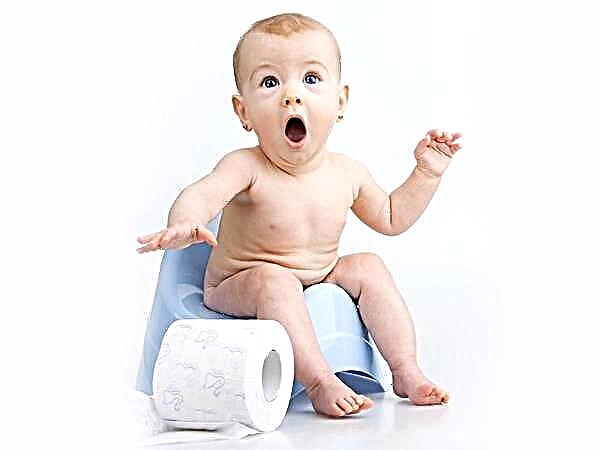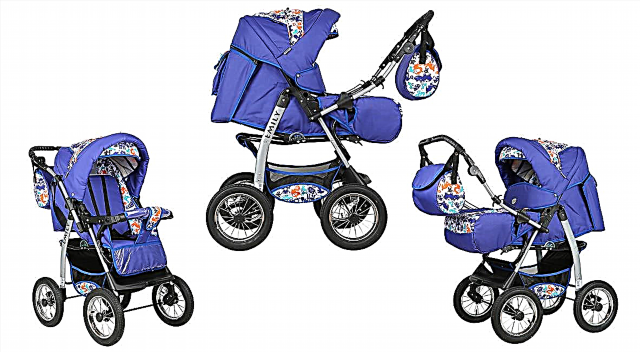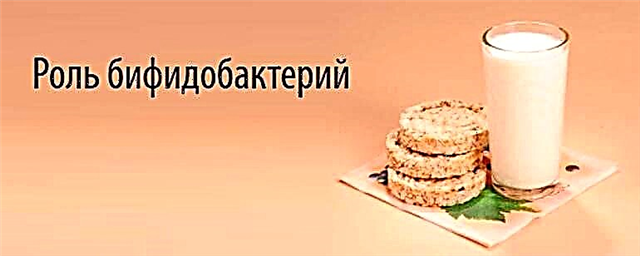Bathing is an important ritual that must be repeated daily. This obligatory procedure helps to eliminate dirt and sweat accumulated during the day, as well as relaxes muscles well and soothes the baby's nervous system. After water procedures, children usually eat well and quickly fall asleep. Parents should take care of properly preparing the bathing area and observing safety rules.

Newborn baby in a bathtub
Features of bathing newborns
Water treatments are a very beneficial activity for all babies, starting from the first day after birth. The aquatic environment is familiar and familiar to the baby, since he spent nine months in it while he was in his mother's womb. Newborns feel very comfortable in the water. Bathing is a hygienic procedure that aims to cleanse the baby's skin and hair from accumulated dirt.
Daily bathing contributes to the correct physical development of the baby, carries an element of play, therefore, has a beneficial effect on the mental and psycho-emotional development of the child.
Whether to bathe with an unhealed navel
There is no single answer to this question. Some pediatricians recommend starting bathing a newborn, even if he has a clothespin on his navel, others say that it is better to abstain from water procedures until the moment when the umbilical cord is completely dry. A well-known pediatrician and author of books on the health and upbringing of children, Yevgeny Komarovsky, says that it is up to the parents to decide whether or not to bathe the newborn in the early days.
Consider! If the child is in good living conditions, does not sweat much and does not overheat, does not get dirty, then nothing such a terrible thing will happen to him if he is not bathed in the bathroom for one or two weeks. It will not bother him in any way. If the parents are worried that the baby is uncomfortable, then you can always wipe the problem areas and folds with wet wipes.
If the parents decide to start bathing the newborn baby immediately after discharge from the hospital, then until the umbilical wound heals, this should be done with boiled water without using soap.
Important! Komarovsky does not recommend adding potassium permanganate to the water, since it is completely useless in small doses, and in large quantities it is dangerous. It is better to replace it with an infusion of a series.

Bathing a child with an unhealed navel
Is it possible to bathe a child with a runny nose
If a runny nose is the only symptom, a ban on water treatments is not justified. On the contrary, a warm bath will help alleviate the condition of the child, you just have to adhere to some important rules:
- Make sure that the temperature of the water in the bath does not drop below + 37-38 ° С;
- Avoid drafts, the air in the room should be slightly heated before bathing (for this, a small amount of hot water can be drawn into the bath);
- If the baby is in the bathtub, then all parts of his body that are not immersed in water must be watered from time to time from a bucket. This is necessary in order to smooth out the difference in the upper and lower temperatures affecting the body;
- Immediately after taking a bath, in order to prevent hypothermia, the child must be dressed in warm pajamas or other suitable clothing;
- It is preferable for the baby to go to the crib immediately after bathing;
- Without unnecessary need, the baby's head does not need to be washed, since wet hair may cause a runny nose to worsen;
- It is very often not worth carrying out water procedures, it will be sufficient once every two days;
- The optimal bathing time for rhinitis is 7-10 minutes.
Note! When the baby is in the bathroom, his airways are well moisturized and warm, as during inhalation. This will reduce the swelling of the mucous membrane and strengthen the local immunity. If the baby looks sluggish, behaves capriciously, or has a high body temperature, then bathing is better to postpone for a while.

Bathing a child in an infusion of herbs
When is it better to bathe a baby
When is it better to bathe a newborn? The most suitable time for water procedures is 8-9 pm. After the bath, the baby will get tired, relax, have a good meal and quickly fall asleep until the morning. If the child cannot wait that long and, as a rule, falls asleep much earlier, then the parents must adjust to the biological clock of the baby and monitor his behavior. You may need to reschedule your bathing ritual in the morning or afternoon. After the appropriate time has been determined, it is necessary to fix it and make it constant.
When to bathe a newborn: before meals or after meals? Some babies like to take a bath before feeding, others on a full stomach. To understand which option is more suitable for a baby, and when it is best to feed him, can only be experienced. Just a few procedures are enough to find out your child's preferences and make the right decision. Parents should not ignore the children's cry; they should always remember that for the baby it is the only way to express dissatisfaction.
Important! Hygiene treatments performed in the evening will help release tension, relax and sleep. If the baby is very excited after bathing and does not fall asleep well, it is better to wash him during the day, between feedings.

Evening bathing will calm and relax your baby
How long to bathe after feeding
Parents who do not know how long it is possible to bathe the child after feeding should know that immediately after the baby has eaten, it cannot be washed - this can provoke profuse regurgitation and the appearance of intestinal colic. Pediatricians state that the minimum amount of time that should elapse after feeding is 30-40 minutes. How long after a meal can you bathe your baby? Ideally, about an hour should elapse between the meal and hygiene procedures (this time will be enough for some of the food to be completely digested).
Is it possible to bathe before meals
Bathing the newborn is preferable before night feeding. But kids are all different: one will be happy to swim before eating, and the other, only after a good meal. Parents should consider the child's feelings and mood. You cannot bathe a baby if he is very hungry and requires food.
In most cases, carrying out water procedures before feeding is the best solution. Bathing, the child will not only become clean, but also perform a certain exercise, which is quite costly in terms of the applied physical efforts. It is for this reason that it is more logical to first let the baby get really tired, only then feed him and put him on a long and strong night's rest.
Dr. Komarovsky recommends adhering to this scheme: bathing, then the last feeding and a night's sleep. He emphasizes that this approach has obvious advantages: a gentle attitude towards the child's digestive organs (physical activity does not take place on a full stomach), the child's ease of falling asleep, and a long and high-quality night's sleep.
How to properly bathe a newborn
In order for the procedure to bring maximum benefit and comfort for the child, parents should take into account some of the nuances:
- For bathing, it is better to use not a large adult bathtub, but a children's one, with a length of 70 cm. You can purchase a special anatomical bathtub, which is more convenient for use, since its plane will be located at an angle so that the baby's head is well above the water;
- Before use, it is necessary to wash the bath well with baby soap and rinse with boiling water;
- In order not to worry about the selected water temperature, you can purchase a water thermometer. The water temperature should be 37-38 degrees;
- If there is a need to use decoctions of herbs for bathing, it is worth knowing in advance what healing properties each of them has. The broth should be prepared in advance (one hour before bathing) and added to the bath, straining immediately before bathing;
- In the first month of an infant's life, you cannot use a sponge or washcloth for bathing; it is better to take a soft cloth, cotton swab or lightly wash the newborn's skin with your hand;
- In the process of lowering the baby into the water, you need to hold your head and back with your left hand, and your legs and butt with your right hand;
- Lower the child into the water carefully, hold it so that the head and shoulders are above the water surface. Rinse the baby's palms and arms, then the feet and legs.
Additional Information. After bathing, the navel must be treated, allowing it to dry. For this, it is better to use 3% hydrogen peroxide, Chlorhexidine and Miramistin. Drop into the umbilical wound with a pipette. Remove soggy crusts, but only if they separate well. It is not necessary to process the navel with Zelenka. You still can't cover the navel with a plaster or bandage, as this can cause the appearance of pathogens and further infection.

Bathing a newborn in a diaper
How to bathe a baby per month
How to bathe a month old baby:
- Lower the child into the water with the back down.
- It is important that the head and neck of the crumbs lie in the palm of mom or dad, and the shoulder blades and shoulders are in the water.
- For more convenience, you can use a slide or hammock so that two hands are free to bathe your baby.
- Lather the entire body of the child with gentle movements, going from the neck to the legs. Pay special attention to the folds of the skin, neck, palms, ulnar and popliteal fossa, genitals, anus.
- Next, lather the head of the newborn, wash off the soap.
- At the end of bathing, pour water on the baby, the temperature of which should be one degree lower than in the bath.
Note! Until a month and a half of a child's life, it is better not to use baby hygiene products (shampoo, foam, gel). If necessary, it is better to use baby soap, but not more often than once a week.

One month old baby swims in the bathroom
Bathing process
How to wash a baby in a baby bath:
- Position the bath so that mom or dad can comfortably keep their back straight for 7-10 minutes. You can conveniently position the baby bath in a large tub using special frames. It is also convenient to use an anatomical bath, in which one tip is slightly raised. This will allow good support for the baby's head so that it does not sink into the water. If the bath is ordinary, you can simply put a diaper folded two or three times under the child's head;
- Prepare the water by bringing it to a temperature of 37-38 degrees. If necessary, you can add a pre-prepared decoction of medicinal herbs to it;
- In the first weeks of a child's life, it is better to bathe not naked, but wrapped in a thin diaper - this way he will feel much more comfortable;
- Immerse the child's body completely into the bathtub together with the shoulders, and carefully place the head above the water surface, laying it on a rolled up diaper;
- You can leave the crumbs in water for a few minutes or immediately start pouring water from a ladle on it. You need to do as the baby likes and constantly monitor the comfortable temperature of the water;
- If the baby is bathing in a diaper, it is necessary to gradually release his legs and arms and wash them slightly;
- After bathing, rinse the child with clean water, especially if bath soap has been used.
Additional Information. A child should be bathed every day, as this is not only an important hygienic procedure, but also gentle hardening.

Baby in the cervical circle
What to do after swimming
Actions after bathing:
- Wrap the baby in a towel that will absorb moisture well. It is better to buy a baby towel with a hood so that the baby is warm and his hairs on his head dry faster.
- Treat the navel in the first weeks.
- It is good to blot all the folds on the baby's body, dry the skin with gentle blotting movements, try not to rub it with a cloth.
- Carry out hygiene procedures: clean the ears, treat the skin with powder or moisturizer.
- Putting your baby in a diaper and clothes (or swaddling in a diaper).
Bathing a baby is a special procedure that, apart from some minor troubles, will give parents and child a huge amount of joy and undoubted benefit, provided that the parents do everything right.



